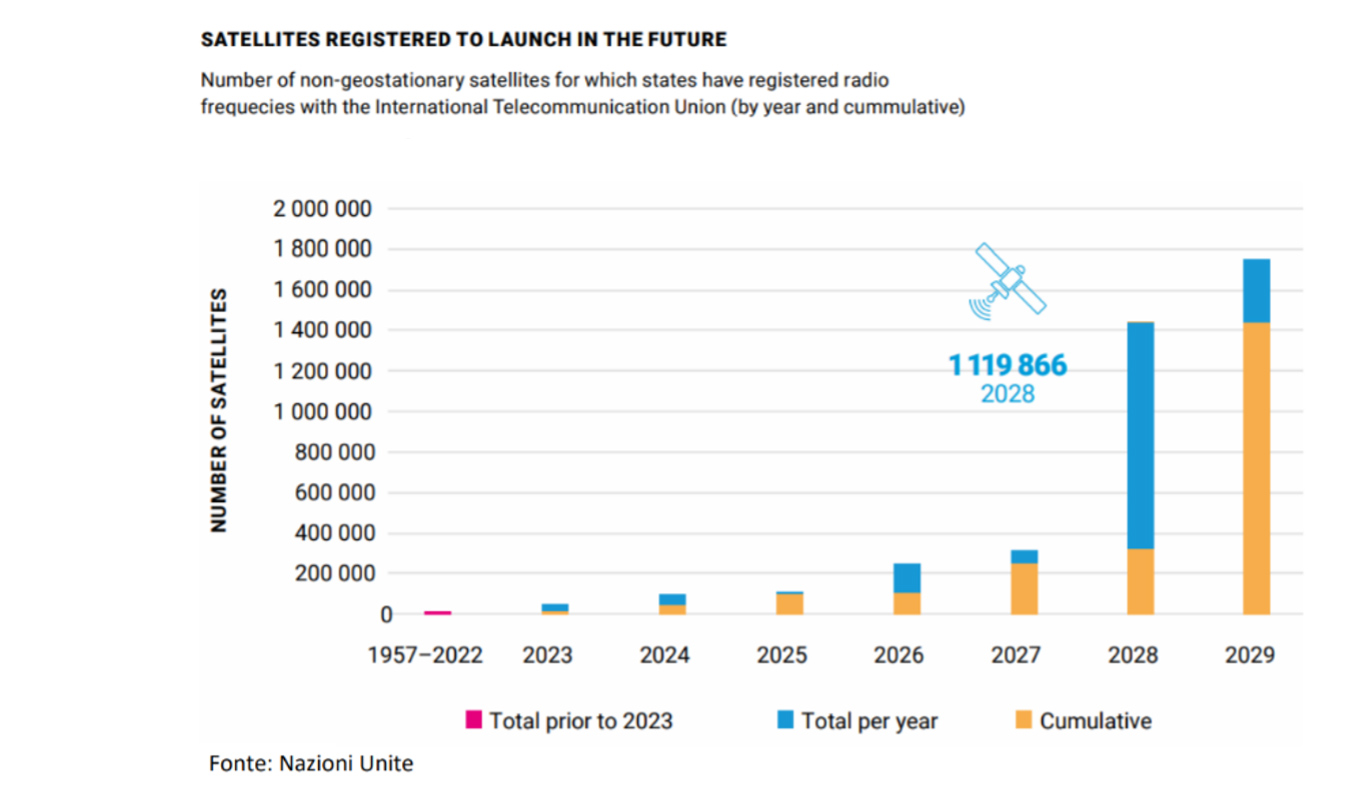Want to discover all the news about Space Logistics and Space Economy?
Learn more about how Space Logistics is revolutionizing the space industry:
all the details, market data and emerging opportunities are in the full report by Innovation Center.
What is space logistics, what it serves for and why it is essential for the evolution of the industry towards Space 4.0


The evolution of the space industry is changing from a paradigm shift: from exploration mainly conducted by government agencies to an innovation "rush" involving the private sector and innovative technology startups. This change, part of the fourth industrial revolution towards Space 4.0, necessarily requires a value chain that allows operating, managing and performing maintenance for the different space assets: the space logistics.
Enabling the development of space logistics - and consequently of the Space Economy in its entirety - is the realization of an extensive and articulated infrastructure ground capable of supporting the strong growth of space launches and related control activities, management and communication.
From a government perspective, the UK is emerging as one of the most space faring (conceptually similar to airports) countries in Europe. The best known is Cornwall Spaceport, located in south-west England, which has been featured as the first zero-emission spaceport in Europe.
Italy is also participating in this space race, with projects such as the Grottaglie spaceport and leading startups in space logistics such as D-Orbit.
The increase of satellites in orbit has boosted logistical complexity, requiring launch window planning to avoid collisions and conflicts between vehicles through solutions that go beyond standardized practices and continuous monitoring of objects in orbit.
The technical challenges concern the life cycle management of assets in space, including the need for maintenance and in-orbit support to ensure continuous operation through repair and component replacement with rigorous calculations to avoid delays in operations and ensure safety.
In the areas of technological innovation to extend asset life and reduce the need for and number of interventions, innovative solutions are developed focusing on panels and coatings resistant to wear and small impacts. In addition, technologies are being developed to reposition satellites on different orbits.
With the steady growth of Space 4.0 operations, the global space logistics market is expected to grow from US$4.17 billion in 2022 to US$20.38 billion by 2032, opening up new opportunities for businesses.
Among these, in space logistics stand out innovative solutions such as the Ground Segment as a Service (GSaaS), which allows outsourcing on demand services necessary for the operation of processes or infrastructures, and the On-orbit Servicing that enables advanced operations such as repair, refueling and updating of satellites already in orbit.
In this sense, D-Orbit is participating in a major project funded by the PNRR and led by Thales Alenia Space, involving two spacecraft. The first, made by Thales Alenia Space, approaches a target satellite of the startup based in Fino Mornasco (Como) and hooks it up, with the latter handling the transfer of fuel.
The leadership in space logistics of the innovative Italian startup was further confirmed in September 2024 with the closing of a round of C-type capital raising for a total amount of 150 million euros, which also involved Neva SGR, Venture Capital company of Intesa Sanpaolo 100% owned by Intesa Sanpaolo Innovation Center, which had already invested in D-Orbit.
The success of round will enable the Italian startup to develop new technologies in the field of space cloud computing and in-orbit maintenance services, along with possible strategic acquisitions to further expand and diversify its product offering, as well as support for innovative solutions in order to create a circular space economy with the aim of turning space debris into useful resources.
In terms of sustainability, it is necessary to overcome the earth’s gravity, a task that requires large amounts of energy from rockets, to launch a payload into orbit. The challenge here is to optimize fuel consumption while reducing emissions of climate-altering gases. Alternative fuels are being studied, such as mixtures of bio-propane, kerosene from plastic waste and paraffin.
The issue of increasing assets in orbit is not only traffic. In fact, over the last 50 years the accumulation of space debris has led to an estimated annual social cost of 11.5 billion dollars. In 2022, the World Economic Forum introduced the "Space Sustainability Rating" as an incentive to assess the impact of operations and receive practical guidance for improving sustainability, while several calls have been launched to find solutions to remove the debris currently present in the space.
Another sustainability issue is the radio spectrum, which with the increase in demand for connectivity from the expansion of 5G to the spread of the Internet of Things (IoT) creates various interferences between different networks. Radio spectrum has therefore become a significant concern, with the need for innovative solutions, including artificial intelligence for dynamical frequencies allocation..


Source: UN
The circular approach in space is a strategy to re-use materials already in orbit, such as materials from old satellites and decommissioned components, into new structures or components through technologies such as 3D printing. This not only limits costs, but also increases the autonomy since every kilogram of material sent into space is expensive. Other circular solutions convert organic waste into water, oxygen or biofuels.
At the same time, the concept of sustainability is expanding to the human sphere and, in this sense, the focus on the physical and mental well-being of astronauts is absolutely relevant. In extreme environments such as space, technologies and solutions are emerging to monitor and improve the quality of life. These include tools to collect stress data, sleep quality for optimizing sleep-wake rhythms in the absence of a natural day-night cycle, and emotional responses to support emotional resilience and reduce isolation.
Learn more about how Space Logistics is revolutionizing the space industry:
all the details, market data and emerging opportunities are in the full report by Innovation Center.